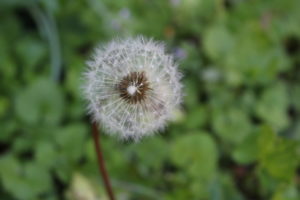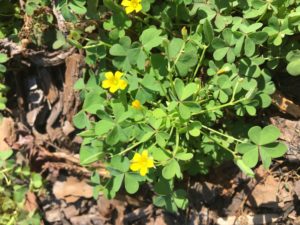Weed Management for Homeowners
go.ncsu.edu/readext?693188
en Español / em Português
El inglés es el idioma de control de esta página. En la medida en que haya algún conflicto entre la traducción al inglés y la traducción, el inglés prevalece.
Al hacer clic en el enlace de traducción se activa un servicio de traducción gratuito para convertir la página al español. Al igual que con cualquier traducción por Internet, la conversión no es sensible al contexto y puede que no traduzca el texto en su significado original. NC State Extension no garantiza la exactitud del texto traducido. Por favor, tenga en cuenta que algunas aplicaciones y/o servicios pueden no funcionar como se espera cuando se traducen.
Português
Inglês é o idioma de controle desta página. Na medida que haja algum conflito entre o texto original em Inglês e a tradução, o Inglês prevalece.
Ao clicar no link de tradução, um serviço gratuito de tradução será ativado para converter a página para o Português. Como em qualquer tradução pela internet, a conversão não é sensivel ao contexto e pode não ocorrer a tradução para o significado orginal. O serviço de Extensão da Carolina do Norte (NC State Extension) não garante a exatidão do texto traduzido. Por favor, observe que algumas funções ou serviços podem não funcionar como esperado após a tradução.
English
English is the controlling language of this page. To the extent there is any conflict between the English text and the translation, English controls.
Clicking on the translation link activates a free translation service to convert the page to Spanish. As with any Internet translation, the conversion is not context-sensitive and may not translate the text to its original meaning. NC State Extension does not guarantee the accuracy of the translated text. Please note that some applications and/or services may not function as expected when translated.
Collapse ▲Anyone who is growing plants has had an experience with weeds. What is it about weeds that is so troublesome? Weeds are plants growing in the wrong place – for homeowners, this means you’ve got something growing where you don’t want it. You may consider it an eyesore, or worse – weeds may harbor pests, compete with the plants you do want to grow, or sometimes be harmful (e.g. poison ivy which causes skin rash in many people).

As a gardener, managing weeds should become part of your integrated pest management (IPM) program. Using IPM means you are using multiple strategies to control weeds, your goal is to keep weeds at a manageable level (not to eradicate them), and you utilize other methods of control before reaching for a pesticide. If you do use pesticides, always read and follow all label directions.
In terms of weeds, some things you can do to keep them under control in your home landscape include:
- Keep weeds from flowering so they can’t create more seeds. You could try mowing or hand removing weeds to accomplish this.
- Become familiar with what common weed seedlings in your yard look like. This will take some time and attention, but will be worth it when you’re able to pull the weeds before they become large.
- Use mulches as a barrier to prevent weed seed germination. Mulches have lots of other benefits, in addition to helping control weeds in your yard. Spreading mulch in late winter/early spring is a great time – perennials will grow up through the mulch, so you don’t have to worry about placing mulch around them.
- Plant so there are few bare spots in your yard. If you space desirable plants so that they will cover the soil, they can shade out weeds so they don’t grow.
- When removing weeds, try to remove the roots too. This is especially helpful for perennial weeds, which will often resprout from roots that remain in the ground.
- Irrigate only the plants you want. Drip irrigation is great for achieving this – place drip emitters so that they are watering plants in your landscape and not bare patches or weedy areas. If you are watering by hand, water at the base of the plants you want.
- Inspect new plants you bring into the yard. Try to keep weeds out of your garden by choosing plants without weeds in their pots when you get new plants.

As much as we may hate weeds, they are a normal part of gardening. Understanding the science behind how weeds grow will help you manage them. For instance, you might be able to categorize your weeds as broadleaf weeds, grasses, or sedges. If you are using pesticides, selective pesticides target only one of these categories. A broadleaf herbicide may be helpful for killing clover in your lawn and, when used correctly, won’t hurt the grass.
Another way to categorize weeds is by their life cycle. Annuals complete their life cycle in one year – the key to controlling these is to prevent seeds from forming and germinating. Winter annuals grow when the weather is cooler (spring and fall), while summer annuals thrive in the warmer months. Time your controls accordingly. Perennial weeds come back from roots or crowns. Typically, this makes perennial weeds more difficult to control. You many need to repeat your control method (e.g. pull the weed more than once) before you get good control of a perennial weed.
For more information on controlling weeds in your yard, here are some helpful resources:
- Identifying and Managing Landscape Weeds: A Guide for Homeowners in the Piedmont Region of NC
- NC Extension Gardener Handbook, Chapter 6: Weeds
- NC State Extension Weeds Portal
- TurfFiles (see the “Weeds” tab for information on weed management in lawns)
- Controlling English Ivy in Urban Landscapes
- Clemson Cooperative Extension: Controlling Weeds by Cultivating and Mulching
- Clemson Cooperative Extension: Broadleaf Weeds
- Clemson Cooperative Extension: Grassy Weeds
Useful books about weeds:
- Weeds of the South – Charles T. Bryson, Micheal S. DeFelice
- Weeds of the Northeast – Richard H. Uva, Joseph C. Neal, Joseph M. DiTomaso




